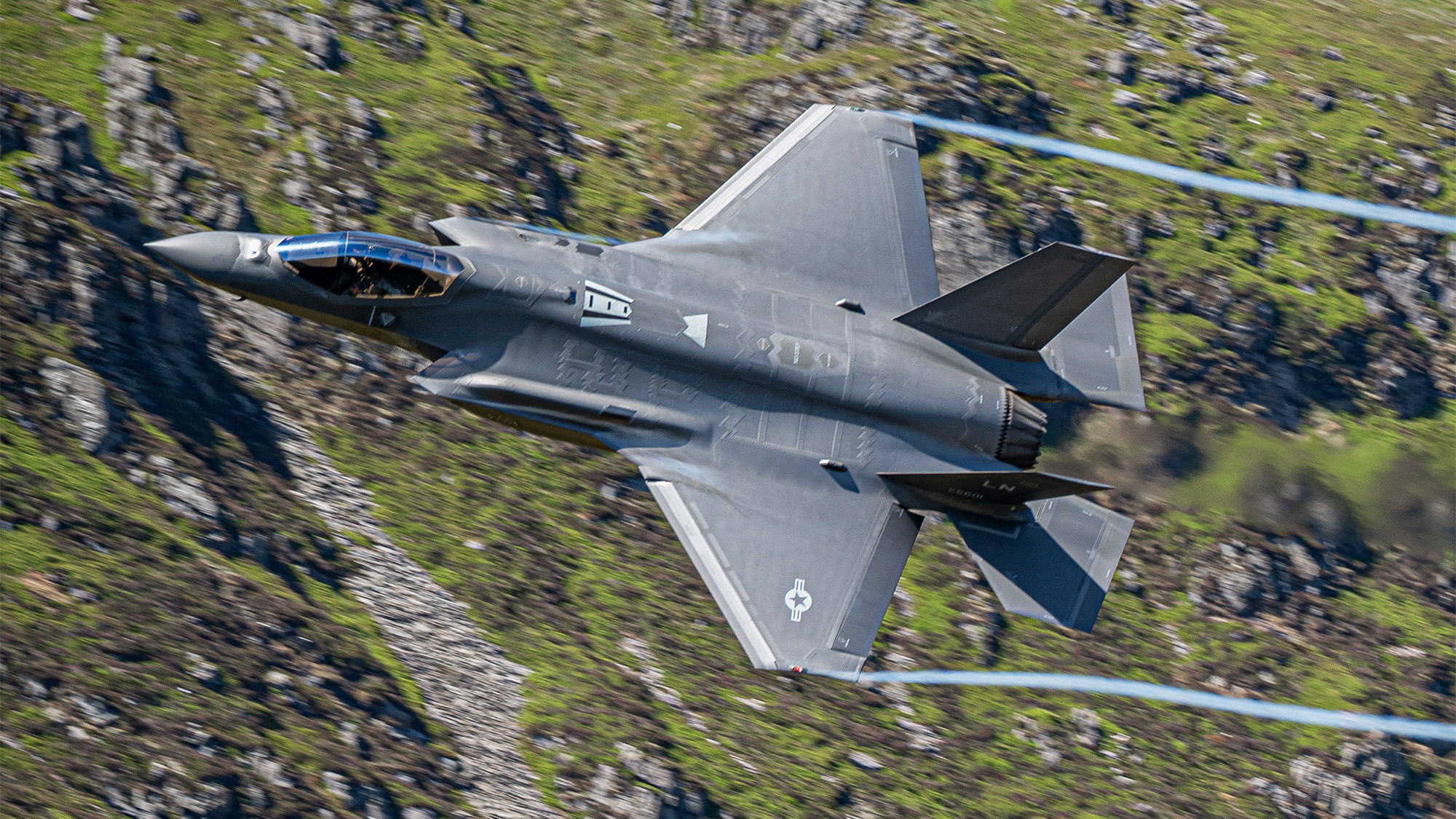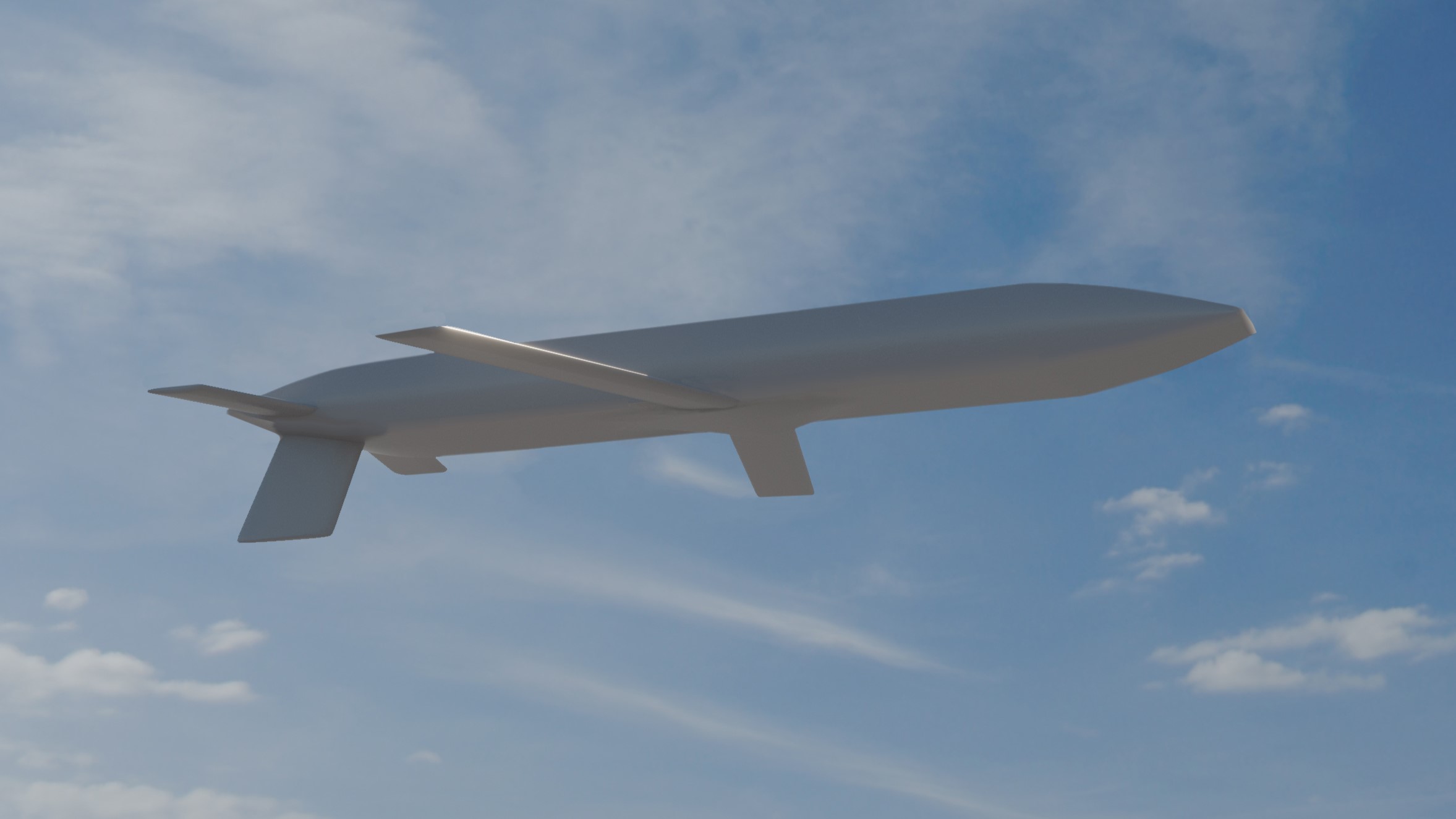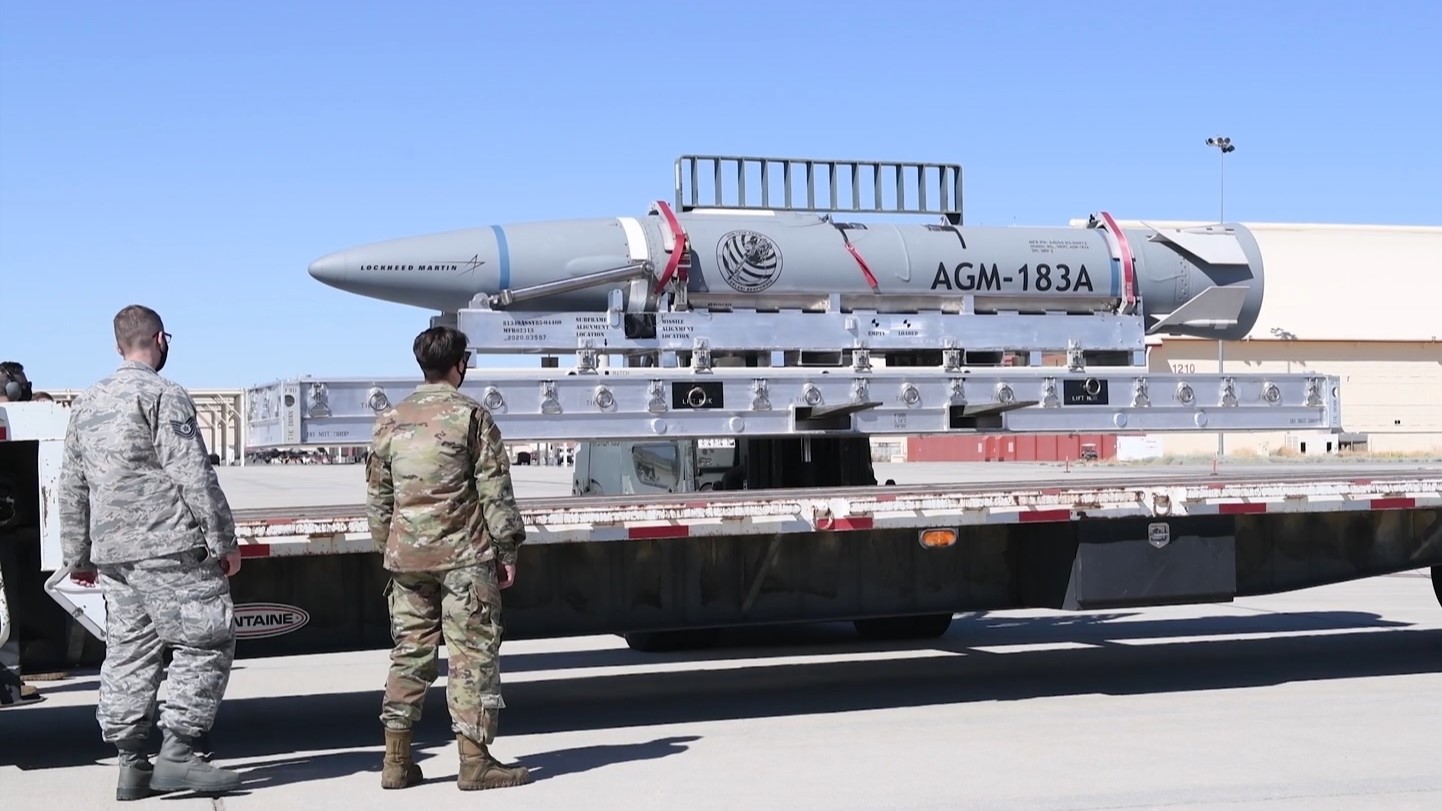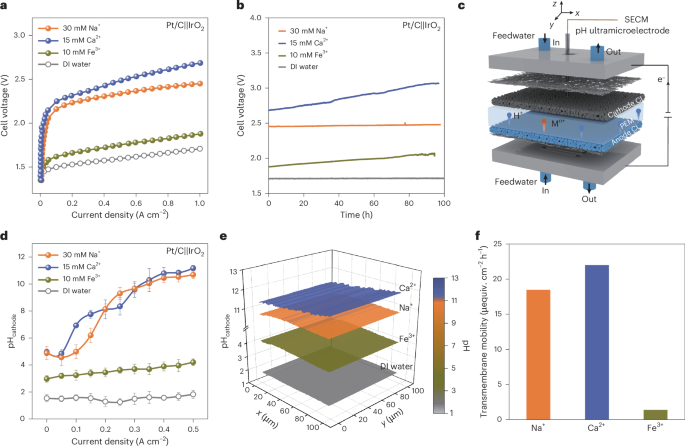Pentagon’s $205B procurement budget revealed: New weapons require reconciliation
Breaking Defense obtained a copy of budget documents sent to Congress.


On March 11, 2024 the Pentagon and military services presented their fiscal year 2025 budget requests. (Graphic by Breaking Defense, original images courtesy DVIDS, Getty)
WASHINGTON — The Pentagon intends to request about $205 billion in procurement funding for fiscal year 2026, roughly 18 percent more than was enacted in FY25, with big winners that include the F-15EX and Army munitions and a big loser in the F-35, according to budget documents obtained by Breaking Defense.
However, roughly $51 billion — or almost a quarter of that total — hinges on whether Republicans are able to pass President Donald Trump’s controversial megabill, still moving through Congress via the reconciliation process. If reconciliation fails, it will leave procurement at just about $153 billion, a notable cut down from FY25’s enacted total of $174 billion.
Breaking Defense exclusively obtained the Pentagon’s projected request for research and development programs on Monday.
The procurement budget documents, which have been sent to Congress, may not be in their final state, with pages that appear to be missing in the shipbuilding section–potentially pointing to a further revision that could come before budget documents are publicly released in the coming weeks.
And another wrinkle: This may not be the only budget plan being sent to Capitol Hill. Inside Defense reported earlier today that the Pentagon has sent the House Appropriations Committee two separate spending proposals, one with reconciliation and one without. Ultimately, that path results in a 7 percent cut for modernization compared to the numbers for FY26 forecasted by the Department last year, the report stated.
It’s a kind of budget rollout that has never been seen on the Hill, and which left members frustrated with Pentagon leadership during a House Appropriations defense subcommittee hearing this morning.
“We don’t have anything today. We have zip, nada at knowing where you’re going,” Rep. Rosa DeLauro, D-Conn., the top Democrat on the committee, said during a moment of visible frustration in the hearing. “You could talk percentages, you could talk about whatever you want, but unless this committee sees dollars and cents and where … your plan is, then we may reconsider what you need to do to go forward. Give us the details.”
Below are key items to know from each of the military services.
Air Force
The Air Force’s procurement for categories like aircraft and missiles would climb under the administration’s plan.
The Air Force is requesting a total of $24.8 billion for aircraft procurement in FY26, with $7.1 billion of that figure coming from reconciliation spending. The service would further spend $6.2 billion for missiles — relying on $1.9 billion to come from reconciliation — while ammunition would total $784 million, all from the Air Force’s base budget.
Overall other procurement would see $32.2 billion in spending, approximately $700 million of which would be sourced from reconciliation. (It’s not clear what portion of the budget may be what’s known as passthrough or “non-blue” spending that is charged to the Air Force but actually goes to agencies outside the Pentagon.)
A top cash infusion candidate is Northrop Grumman’s B-21 Raider, for which the Trump administration would budget $4.7 billion when including $2.1 billion from reconciliation funds. The administration would also request $862 million for advanced procurement spending on the stealth bomber.
Boeing’s F-15EX could also stand to benefit, as the budget request calls for 21 F-15EXs to the tune of $2.5 billion — but all of the money would come from reconciliation. In keeping with the Air Force’s plans to kickstart production of Boeing’s delayed T-7A Red Hawk next year, the service would spend $362.1 million to acquire 14 of the trainers. Procurement of Boeing’s KC-46A Pegasus would also continue, with the service requesting $2.8 billion to acquire 15 of the tankers.
The procurement documents point to new programs as well. Confirming recent comments from the service’s top official, the document says the Air Force plans to spend $387.1 million to acquire the hypersonic Air-launched Rapid Response Weapon (ARRW), though it does not list any specific quantities.
The service is also planning to budget $656.3 million in reconciliation funds to acquire roughly 3,000 units of the recently developed Family of Affordable Mass Missile (FAMM), a palletized munition adapted from an Air Force and Defense Innovation Unit program.
A top billpayer appeared to be the F-35. The service is essentially halving the planned F-35 buy from the previous year, requesting $3.6 billion to acquire 24 F-35As, down from 44 that were ultimately enacted in FY25.
Space Force
In contrast to the big jump in RTD&E funds for the Space Force, the administration’s proposed procurement budget for the service represents a solid cut of $2.8 billion from FY25. The proposed FY26 baseline is $3.39 billion, with the reconciliation bill adding $264 million for a total of $3.66 billion. The FY25 procurement spending level was set at $3.94 billion.
The reductions include haircuts to a number of current programs, such as an almost $2 million reduction for the Family of Beyond Line-of-Sight Terminals. The service asked for $15.4 million in the FY26 baseline, down from $17.3 million in FY25, with no reconciliation added.
The program lined up for the biggest whack is “Counterspace Systems.” That budget line in the past has primarily reflected spending on the Counter Communications System (CCS) ground based jammer and Bounty Hunter, a ground-based communications satellite geolocation and interference detection system.
The Space Force requested $2 million for the line in the FY26 baseline, down from $4.3 million in FY25. However, the FY26 sum is essentially the same as had been planned by the Biden administration, and may reflect the fact that the aging CCS now is being upgraded under a development program known as Meadowlands.
National Security Space Launch (NSSL) procurement also takes a small hit, with the Space Force only planning four launches in FY26 versus seven in FY25. The service requested an FY26 total of baseline and reconciliation funds for NSSL of $1.47 billion; the FY25 level was $1.77 billion.
On the other hand, proposed spending for launches by the Space Development Agency (SDA) of its Proliferated Warfighter Space Architecture satellites in low Earth orbit gets a bump up. SDA received $357 million in FY25 for four launches; now, the Space Force is asking for $648 million in the FY26 baseline for seven launches.
The Space Force ask for GPS IIIF satellites in FY26 baseline is only $110 million, with no actual satellites being procured and no funding additions through reconciliation. This is down from the FY25 spending level of $647 million for two satellites, and counter to the $680 million laid out in the House Appropriations Committee’s (HAC) spending bill for two GPS IIIF spacecraft.
Interestingly, the HAC bill also included more than double the number of National Security Space launches: 11 instead of the four requested by the department for a total of $2 billion. This may reflect a gamble on the part of the Space Force, wagering that Congress would put more funds in.
Navy
The Navy and Marine Corps’s fiscal year 2026 procurement request comes in at around $62.9 billion, with another $32.3 billion expected from the reconciliation bill. Those figures include a base shipbuilding budget of $20.8 billion with — to at least one top GOP senator’s dismay — $26.5 billion expected to come through reconciliation, totaling to $47.3 billion for Navy shipbuilding.
Notably, the documents obtained by Breaking Defense suggest the administration is hoping to procure two Virginia-class submarines but is entirely reliant on a combination of reconciliation funding and prior years funding to complete the buys for both boats. The base budget request for the Virginia-class program of $816 million is significantly less than prior years. The request includes one Columbia-class submarine, according to the documents, and Senate Armed Services Chairman Sen. Roger Wicker, R-Miss., said today the budget request underfunds that program by $4 billion.
The documents appear to be missing pages where line items for the Arleigh Burke-class destroyers and Constellation-class frigates would be included, but Wicker said during a hearing today that the request does not include money to purchase either of those ship classes.
The destroyers, up until now, have been a staple buy for the service each year, with Congress adding in a third ship every other year. Meanwhile, Congress and the Navy did not purchase any new frigates last year due to programmatic issues. A second year failing to buy any already raised eyebrows at the Navy’s budget hearing today in front of Senate lawmakers.
On the aviation front, the administration is not seeking any new F/A-18 Super Hornets, according to the documents, an anticipated side effect of the Navy’s planned sundown for that production line to make way for its anticipated next-gen strike fighter. The budget request does include 12 carrier variant F-35Cs and 11 short-take-off-and-vertical-landing-capable F-35Bs. In total the service’s aviation procurement includes $17 billion in the base budget and $100 million in reconciliation.
Army
In May the Army began rolling out its new transformation initiative (ATI) filled with force structure changes and program cuts — moves reflected in FY26 budget request documents, despite questions from lawmakers about that plan and its supporting analysis.
Outside of those already-announced changes, the procurement document sheds light on the service’s spending priorities along with a push to receive additional “agile” dollar flexibility, effectively broad pots of money that the Army could then use to buy multiple systems.
The service is seeking $28.4 billion in procurement dollars for next year with $26.4 billion coming from the base budget and an additional $2 billion pulled from reconciliation. This is nearly a $3 billion jump over the FY25 procurement level.
Missile procurement coffers were a top winner with the service preparing to spend $8 billion in FY26. That pot includes $1.25 billion on the Lower Tier Air and Missile Defense, $729 million on 44 Maneuver Short-Range Air Defense systems and $1 billion on its Indirect Fire Protection Capability Increment 2 (IFPC Inc 2) program.
Meanwhile the service wants to buy 44 Precision Strike Missiles (PrSMs) with $364 million, while the Typhon missile system — also known as the Mid-Range Capability — would receive $82 million. An additional $438 million would be funneled into the Army’s hypersonic weapon program dubbed Dark Eagle.
To pad its Javelin stores, the document outlines plans to spend $329 million on 649 rounds, while the Guided Multiple Launch Rocket System (GMLRS) could receive $329 million for 659 rockets.
For “agile” funding in the missile sector, the Army says it would like $80 million to buy different versions of launched effects.
One category aligned to take a hit this year is weapons and tracked vehicles, with the Army outlining plans to spend $2.8 billion — a $800 million reduction from the $3.7 billion FY25 total.
If approved as is, the Army’s M1 Abrams upgrade plan would receive $740 million for 30 platforms, while the service would purchase 21 Joint Assault Bridges with $132 million.
Plans to upgrade Stryker vehicles would dip from $388 million in FY25 down to $135 million in FY26, while the Paladin Integrated Management (PIM) upgrade program would cut from $569 million for 20 vehicles in FY25 down to $250 million, for 10 vehicles, in FY26.
When it comes to Army aircraft, the service outlines plans to spend $3 billion with $857 million set aside for “agile portfolio management” in what’s likely a pitch to have more flexibility to buy systems outside of congressional approval. As previously announced, the Army wants to halt purchases of Grey Eagle drones, while also outlining plans to spend $726 million on small aerial drones and $118 million on Future unmanned aerial systems (UAS).
As for manned aircraft, the service wants to spend $790 million on 24 UH-60M Black Hawks under a multi-year buy, and $618.8 million on 11 CH-47 Chinook helos.
Tactical and support vehicles take a hit and only receive $979 million, in part due to previously disclosed plans to halt humvee and Joint Light Tactical Vehicle (JLTV) buys. The purchase of Family of Medium Tactical Vehicles (FMTVs) also drops from $254 million in FY25 down to $85 million in FY26.
As the service looks to recompete its Integrated Visual Augmentation System under the Soldier-Borne Mission Command (SBMC) program, it dropped planned night-vision buys from $367 million in FY25 down to $211 million in FY26.
Meanwhile, it is also seeking to secure $693 million in “agile” funding to have the flexibility to buy various counter-small unmanned aerial systems, as well as $54 million in agile funding for electronic warfare.
The Army’s procurement plan also includes $3.7 billion to spend on ammunition in FY26, and another $213 million on chemical agents and munitions destruction.
Missile Defense Agency
Somewhat surprisingly, the procurement documents show a reduction from FY25 to FY26 in the topline for the Missile Defense Agency (MDA).
However, this likely is an artifact of the lack in the P-1 submission of any FY26 baseline or reconciliation bill numbers for several major MDA programs: the Ground Based Midcourse segment that includes the Next- Generation Interceptor being built by Lockheed Martin to defense against ballistic missiles and the Glide Phased Interceptor being developed by Northrop Grumman to take down hypersonic missiles.
Neither do the documents include any budget numbers for the Aegis Ballistic Missile Defense program or the Aegis Ashore Phase 3 effort.
The THAAD terminal defense system operated by the Army gets a big boost, however, with MDA asking for 25 units in the FY26 baseline for a cost of $523 million. The reconciliation bill would add another 12 units, budgeted at $317 million — for a total of 37 units at $840 million. The agency received $247 million for 12 units in FY25.
The Defense of Guam effort also sees a procurement boost. MDA asks for $11.3 million in the FY26 baselines, plus an additional 56.3 million in the reconciliation package. The agency got $22.5 million for the multifaceted effort in FY25.
Other Defense Department Procurement
Outside of the services, the department hopes to receive a total of $13.9 billion, with $6.3 billion included in the base budget and an additional $7.6 billion garnered through the reconciliation bill. That total almost doubles FY25’s spend of about $7.2 billion.
The department requests $421 million for chemical and biological defense programs, with no additional funding expected from the reconciliation bill. That sum is about $33.5 million more than was given to this area in FY25.
It requests $73.3 million for procurement needs for US Cyber Command, again with no additional funding expected from reconciliation — a total that is more than $36 million less than in FY25.
Procurement funds for the Defense Information Systems Agency could more than double, with a planned base budget request of $826 million. The largest chunk of this funding, $252 million, would go toward the Defense Information Systems Network, the Pentagon’s consolidated worldwide enterprise-level telecommunications infrastructure.
Theresa Hitchens, Justin Katz, Michael Marrow, Ashley Roque and Carley Welch all contributed to this report.




















































































































































